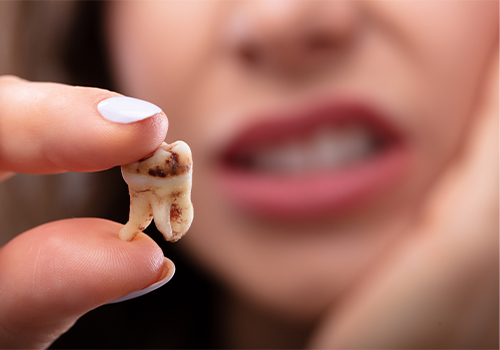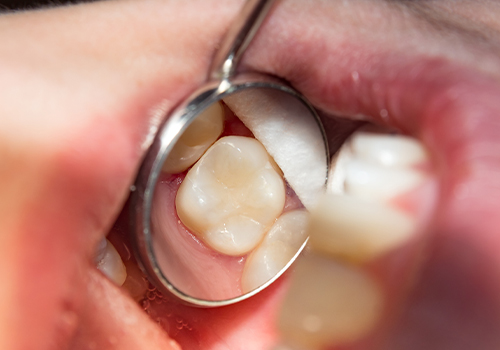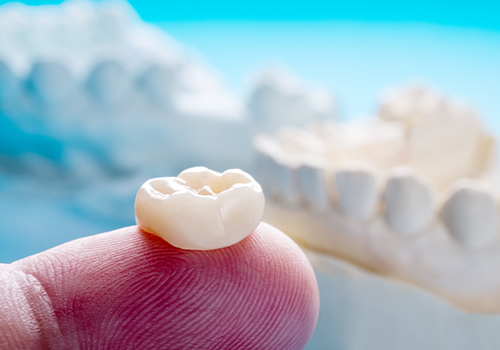
Have you ever caught yourself looking through your dentist’s website and scratching your head? There are many types of restorative treatments available, and it sometimes seems like they all do the same things. This could be the case with dental crowns and fillings.
Continue reading to learn about these two restorative treatments and how each one could potentially help you in different ways.
What Is Tooth Decay?

The main similarity between dental crowns and fillings is the problem they solve: replacing tooth structure lost to tooth decay. Dental caries or cavities are the most common oral health condition in the world with an estimated 90 percent of the world’s adult population having a cavity at some point in their lives.
Decay starts on the surface of your tooth, the enamel. Bacterial plaque growing from the food you eat begins to build up and release acid. This acid is responsible for the demineralization and erosion of your enamel, eventually making black or brown holes.
If left untreated, the decay will invade and eat into an entire tooth or even spread to adjacent teeth to cause issues.
What Is a Dental Filling?

For smaller cavities and slight dental imperfections, dental fillings are the preferred treatment option. This is a fast, and minimally invasive procedure that will have your teeth restored in only a single visit.
Your dentist uses their drill and instruments to gently clear away any decay they find in the tooth. They will then use a tooth colored composite resin material to fill in the gaps left from the cleaning.
A special light is used to harden the material. The dentist then shaped and polishes the filling, and checks the bite. This leaves your tooth whole and functional, and looking beautiful once again.
Fillings are the fastest and most economical treatment available to repair damage from decay. However, it is generally reserved only for small restorations.
What Is a Dental Crown?

A dental crown is a more involved and complete procedure reserved for teeth with severe damage or decay. A crown may be placed by itself or because of another treatment such as a root canal.
To place a crown, your dentist must first use their instruments to carefully remove any decay, and then build up the tooth with composite. The tooth is then reduced enough to allow for a porcelain jacket to be placed over top.
Once the tooth is shaped, your dentist will take an impression of your teeth and place a temporary crown.
The impression is then sent to a dental lab. The lab will use the impression to fabricate your new crown to exact specifications using high strength porcelain.
The crown is then shipped back to your dentist after a couple of weeks and is placed over your tooth on your next visit.
As you can see, while both of these treatments are used to retore a tooth to full shape and function, there is a difference in the amount of time and resources necessary to complete each one.
If you suspect you have decay that needs to be treated, give your dentist a call. The longer you wait to solve the problem, the more intense the treatment required to solve it.
About the Author
Dr. Daniel Rodda is an accomplished and personable dentist serving the people of Phoenix. He earned his dental degree from the State University of New York at Buffalo and has since achieved Fellowship status with both the International Congress of Oral Implantology and the Academy of General Dentistry. He offers a wide array of dental services, including dental restorations at Complete Dental Care. To schedule an appointment, call (480) 526-4317 or visit the website.

